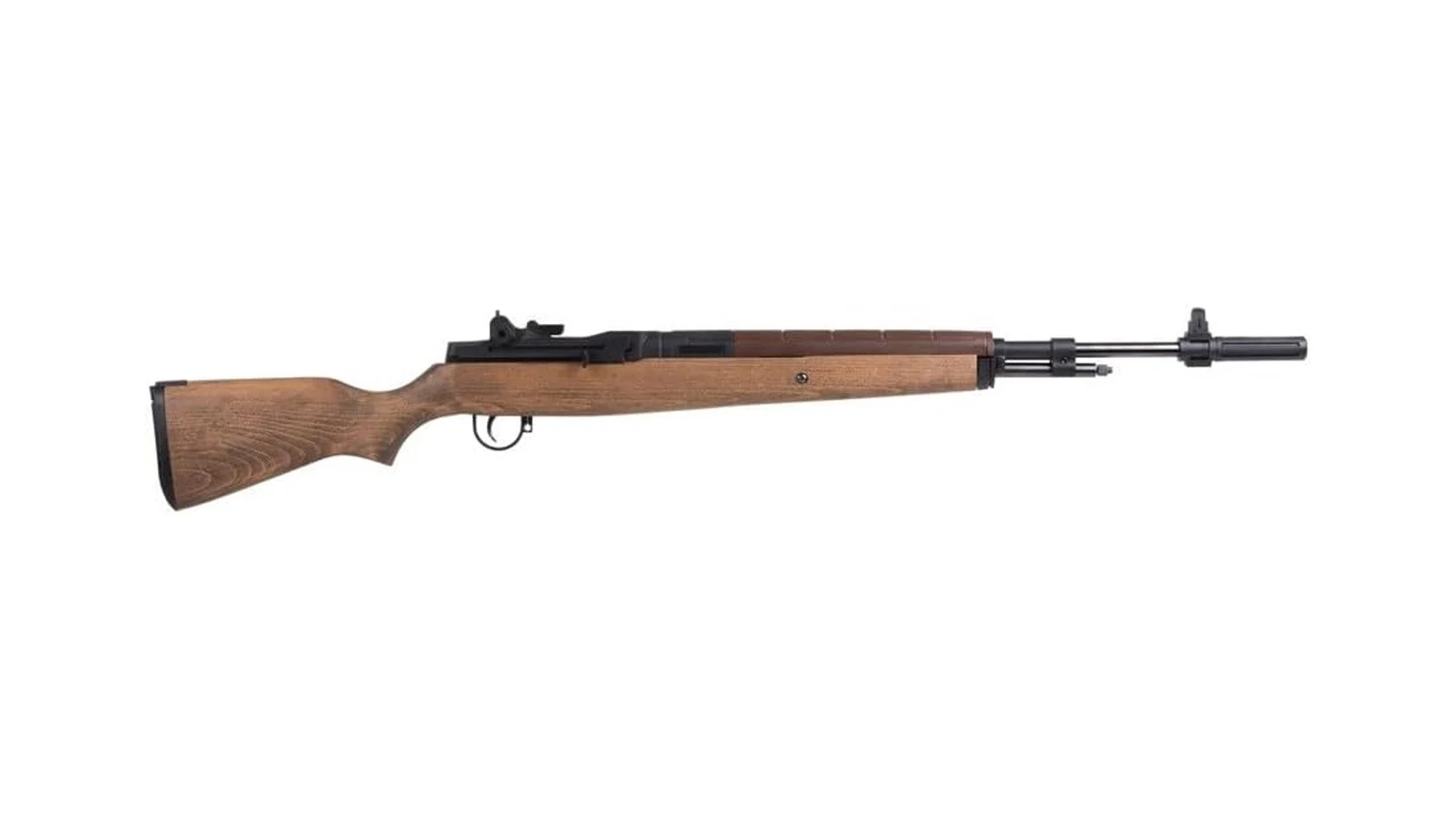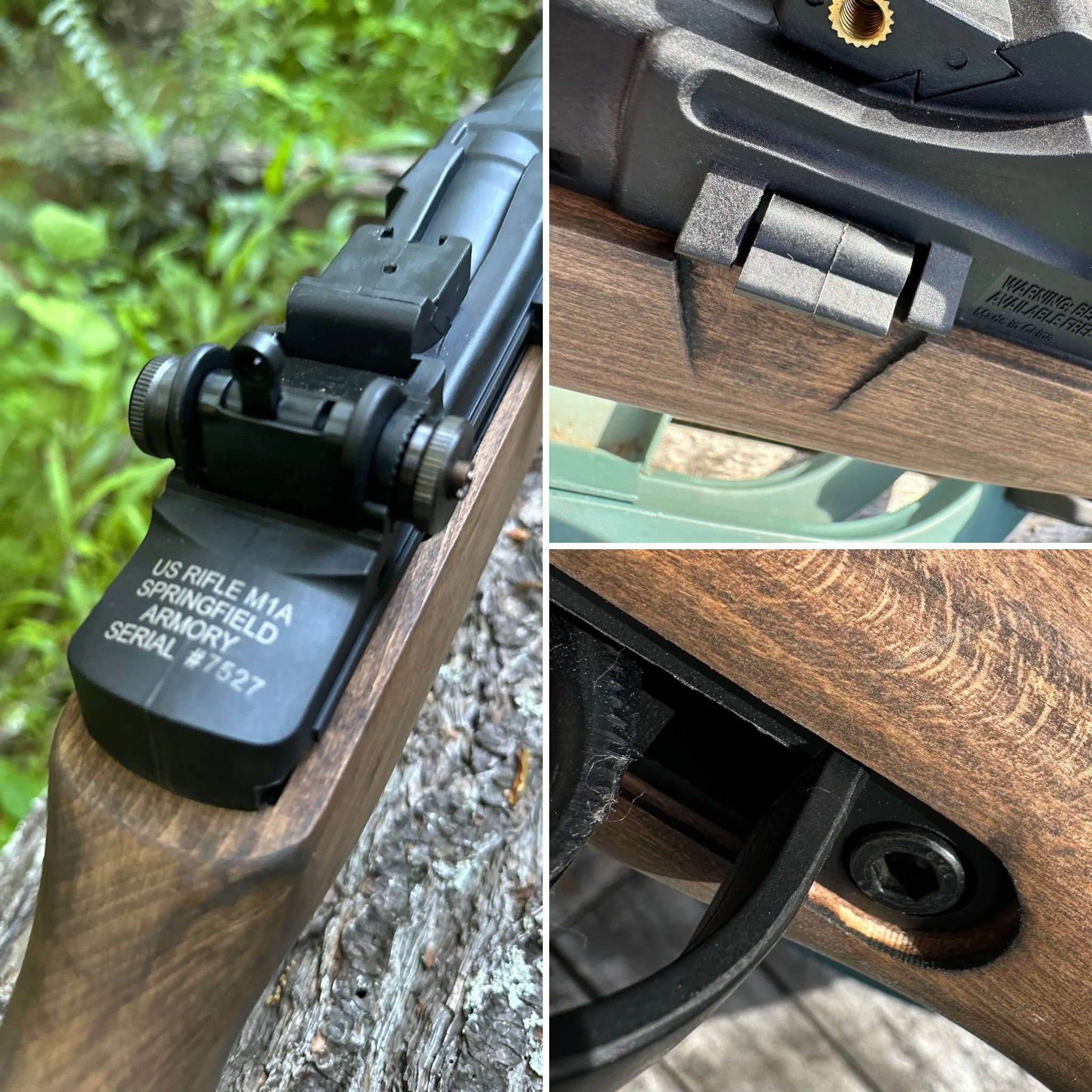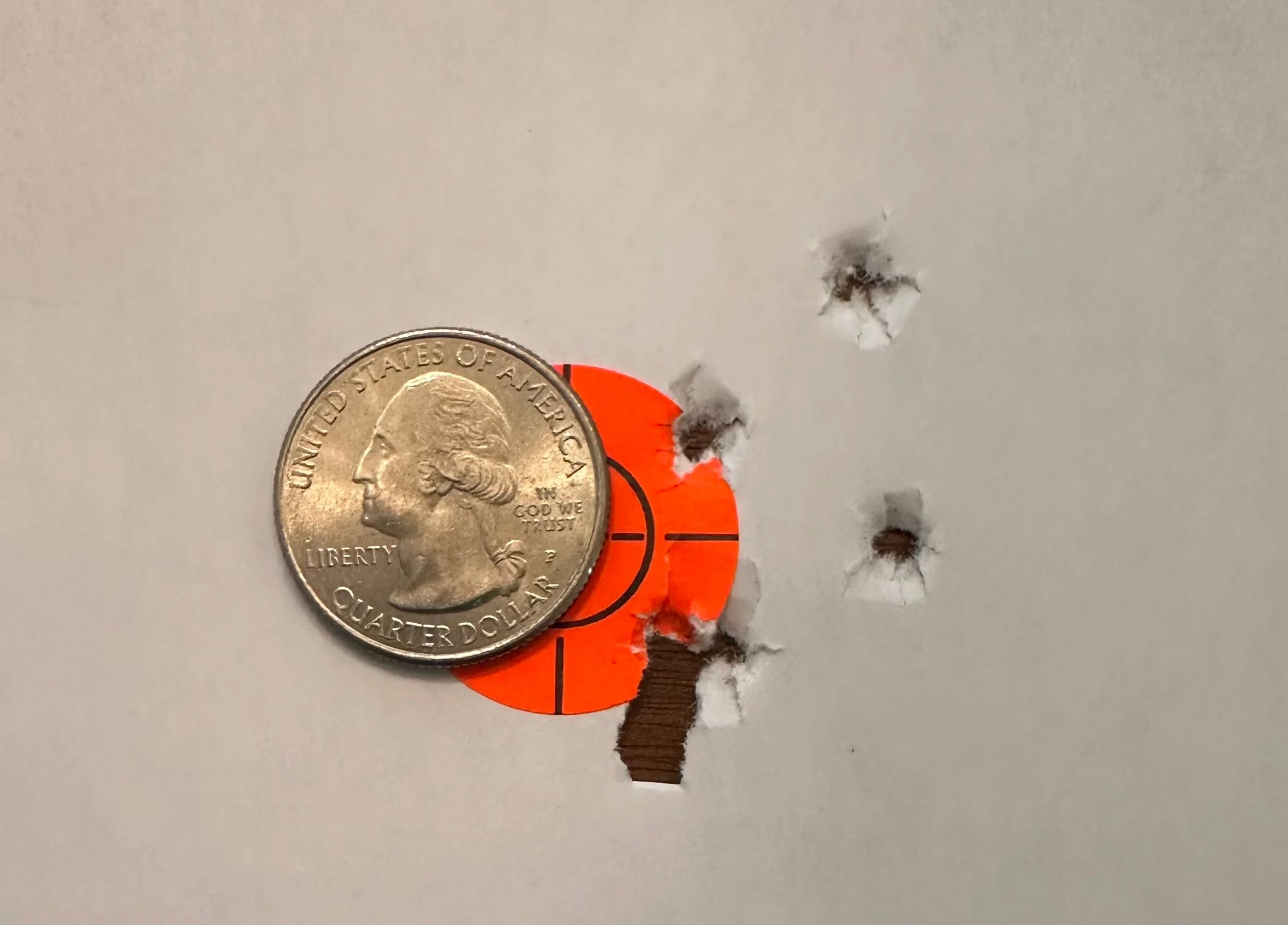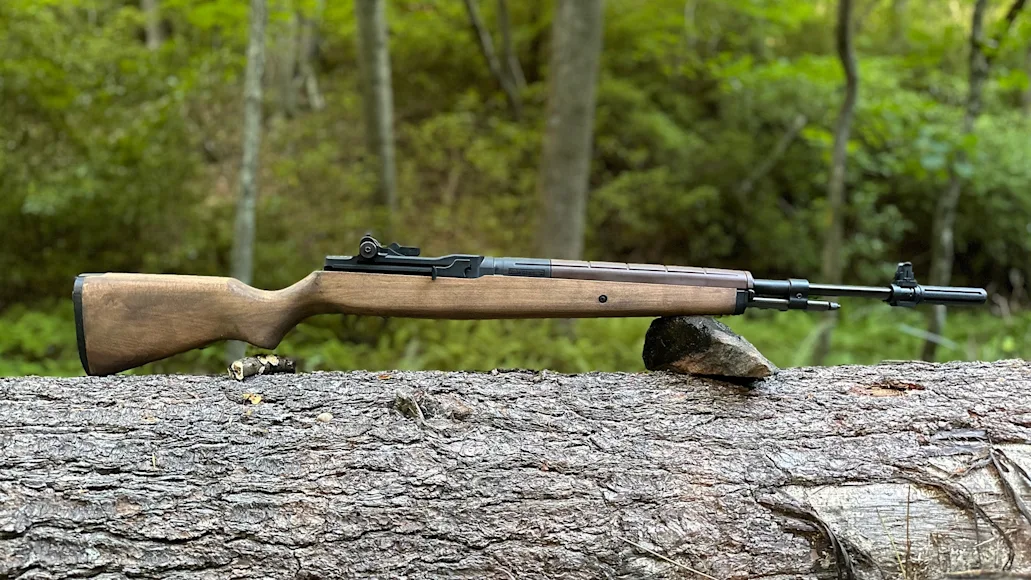_We may earn revenue from the products available on this page and participate in affiliate programs. Learn more ›
_
Developed as a civilian alternative to the military M14 rifle, Springfield Armory’s M1A has been around since 1974. In fact, Springfield Armory just celebrated the 50-year milestone of the M1A’s release with a limited-edition 50th Anniversary model
, just as I was wrapping up testing for the air-powered replica version of this iconic rifle. The air version of the M1A
is an underlever, single-shot pellet rifle available in .177 and .22 calibers. It features a spring piston power plant and open sights.
Manufactured by Air Venturi under a licensing agreement with Springfield Armory, the pellet rifle is a faithful replica in appearance and a good performer suitable for fun plinking and small game hunting
. And at $200, it costs less than 10 percent of what the anniversary edition of the real firearm will run you. Here is a closer look at this replica air gun.

Specs
Type: Spring-piston (underlever)
Action: Single-shot
Caliber: .22 (tested), .177
Projectile type: Pellets
Feet per second: up to 800 (.22), up to 1000 (.177)
Energy at muzzle: 20 foot pounds
Sights: Peep rear, Blade front
Length: 45.6 inches
Weight: 9.9 pounds
Price: $199 (MSRP)
Pros
Good power
Accurate for a springer
Backyard friendly
Easy operation
Realistic design and weight
Moderately priced
Cons
The dye on stock seems cheap
Heavy cocking effort
Not sling compatible
Creepy trigger
M1A Replica Air Rifle Overview
The air-powered version of the M1A combines realistic style with functional performance. The underlever spring-piston design is a perfect match for the M1A, as what would be the gas cylinder on the firearm serves as the air gun’s cocking lever. Pulling down on the cocking lever opens a port for loading pellets. The loading port is large enough to accommodate all but the largest, clumsiest fingers. But the underlever design means you can’t outfit the rifle with a traditional sling.
On underlever guns, that loading port is sometimes called a bear trap. That’s because some poorly designed guns don’t have safety, so accidentally tripping the trigger after the gun is cocked while the lever is down will snap the action shut. If you happen to have fingers in the port when that happens, it’s something you’ll remember for a long time, likely with scarring as a reminder. On the M1A, the bolt catch on the left side of the receiver is an anti-bear trap safety. You have to hit the catch to move the cocking lever back into place and close the loading port.
The M1A air gun features a workable bolt, but it’s just for show, and the pull is just an inch or so. The rifle has threads for a scope mount should a shooter want to install optics. The stock on the pellet rifle is some kind of non-defined hardwood, and the dark coloring is from wood stain, which looks like it was hastily applied by hand. Maybe that is intentional to give the rifle an antique-like patina.
This is a big, heavy gun—just like its firearm counterpart. Because it so closely resembles the firearm version in weight and feel, it would work well for M1A firearms shooters who want to get inexpensive trigger time.

Clockwise from left to right: The M1A breech and rear sight; the bear trap safety release, a close-up of the stock.
Range Performance
I tested the M1A pellet rifle over several weeks at my 25-yard backyard range and at my local range. The test model provided was a .22. As shooters familiar with spring-piston air guns know, they can be hold-sensitive. I shot off sandbag rests with a light hold that works best for me when shooting springers.
Spring-piston guns also typically improve in smoothness and accuracy after a substantial break-in period of 500 or even more shots. Many are also pellet-picky. Finding the right ammo isn’t quite the involved endeavor that tuning a high-end PCP can be, but it can still take time.
This style of air rifle can also be a bit rough early on, and that was the case with the M1A. But cocking became noticeably smoother after a dozen shots or so. The rifle’s cocking effort is 35 pounds, which is pretty stout. Although the cocking lever can be extended for a bit more leverage.
I haven’t hit 500 shots with this pellet gun yet, but I’m already impressed by its performance. The gun’s power is consistent. Shooting 18-grain FX domed pellets
, velocity ranged from 689 to 710 feet per second, which equates to about 20-foot pounds of energy. That’s plenty for pest control or hunting small game.
While accuracy seems to be an afterthought with some replica air guns, that’s not the case here. The M1A is quite accurate, though centering groups required setting the windage adjustment on the rear peep significantly to the left. At 25 yards, I was getting 1- to 1 ½-inch groups out of the gate with the above-mentioned FX domed pellets. The groups tightened up slightly when I tried 18-grain Air Arms domed pellets. The trigger is advertised as two-stage and non-adjustable. I didn’t feel much of a first stage—just a gradual pull before the break, which I measured at just under 2 pounds.

The author’s M1A air rifle grouping at 25 yards.
As I always do when testing springers with iron sights, I pulled out my peep sight adorned Feinwerkbau 124 to shoot a couple of groups under the same conditions. Groups from the .177 Feinwerkbau—which is a tack-driver at 25 yards with a scope—were a little better than the M1A groups, but not by much.
So, why not scope the M1A? The receiver is drilled for a scope mount, and I have no doubt that half-inch groups at 25 yards would be easy with a scope. However, putting a scope on this gun seems like heresy, though I might do it temporarily just for fun and to see just how accurate it can be. But for now, I’m sticking with the iron sights—just like the real gun.
Final Thoughts
Many replica air guns are intended as practice alternatives for firearms shooters looking for an inexpensive way to get trigger time or to appeal to a shooter’s nostalgia for historic firearms. While the Springfield Armory M1A pellet rifle
checks both of those boxes, it’s also a functional shooter that can be an effective hunting or plinking rifle. Despite a so-so trigger and open sights, it’s surprisingly accurate out of the box and will likely improve as it breaks in. It’s a gun that wants and deserves to be shot, not just admired as an homage to a classic American firearm.






